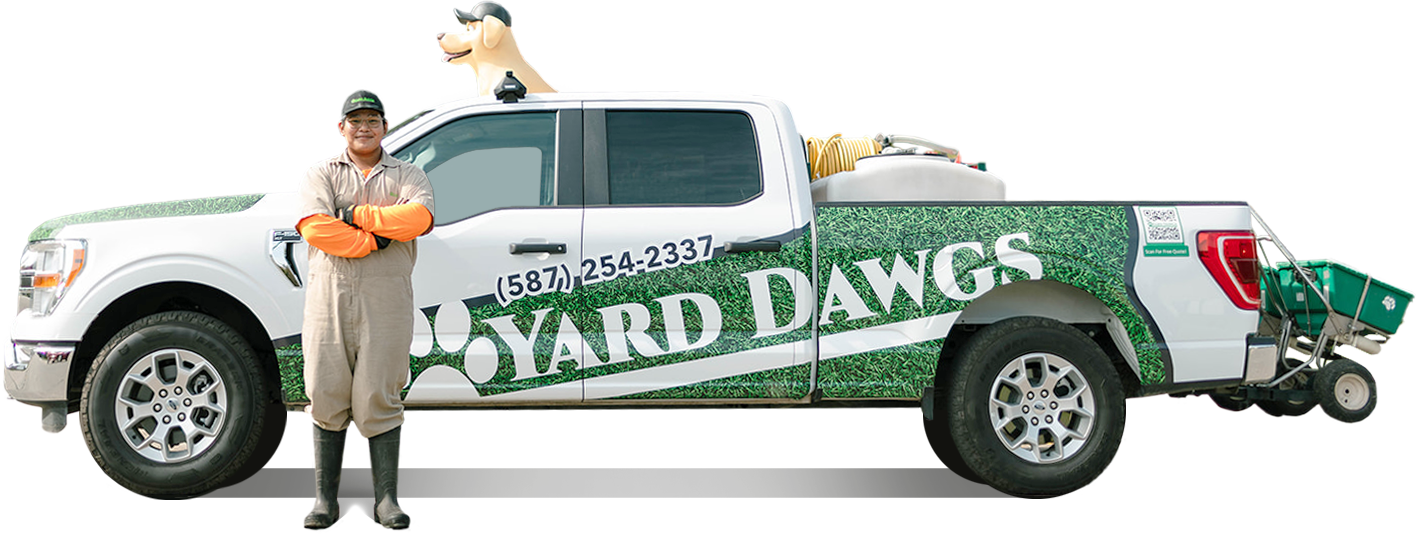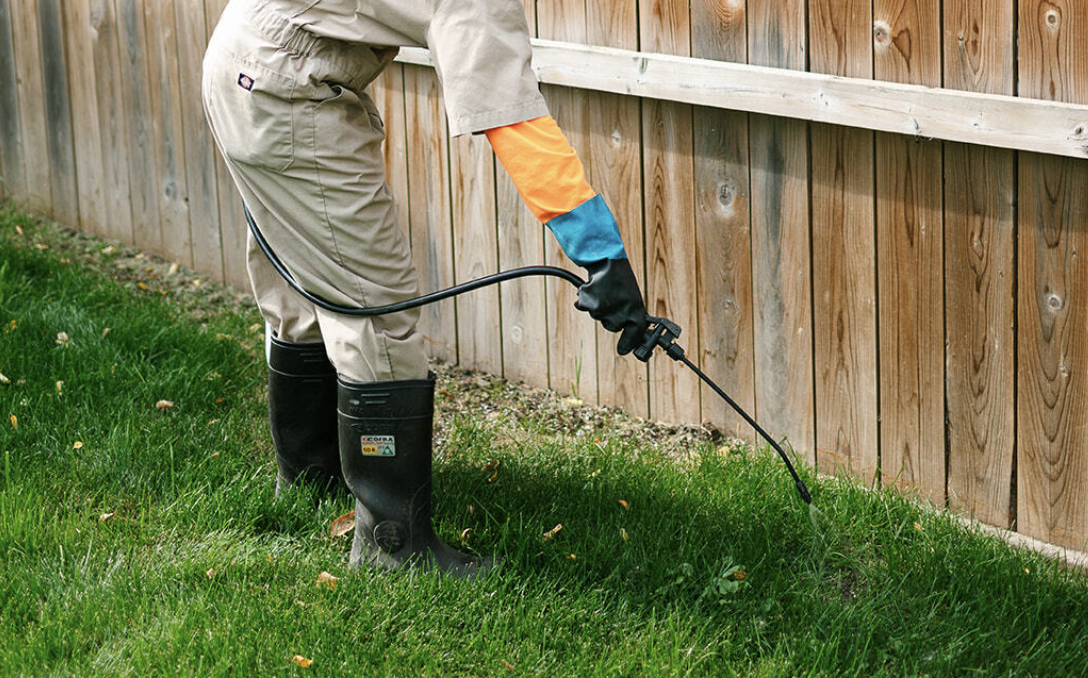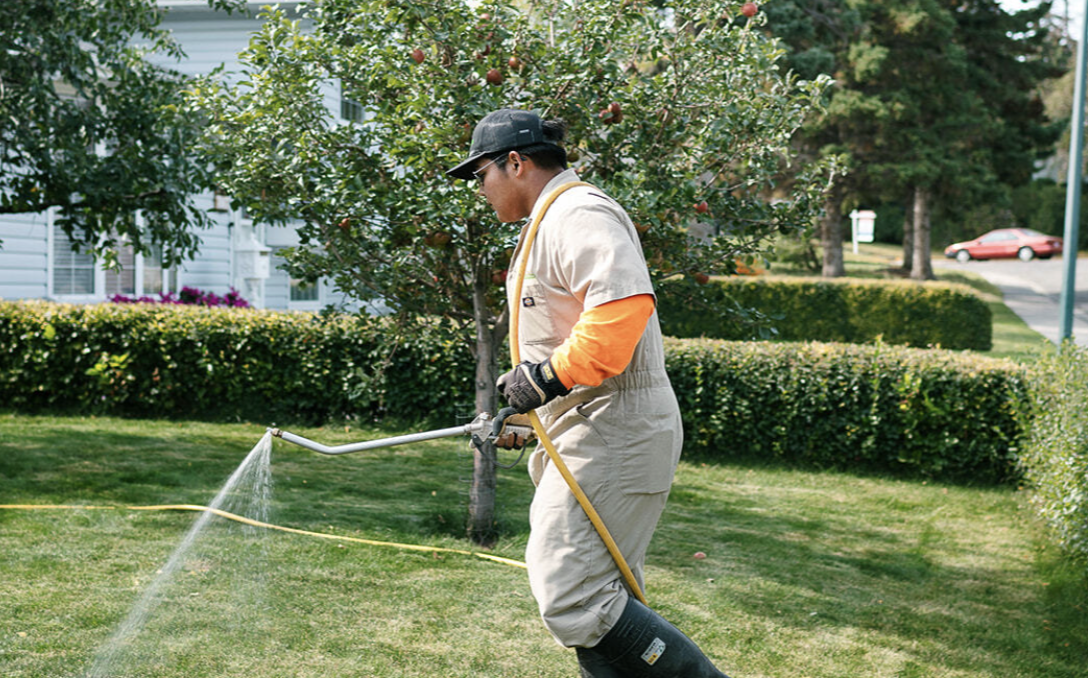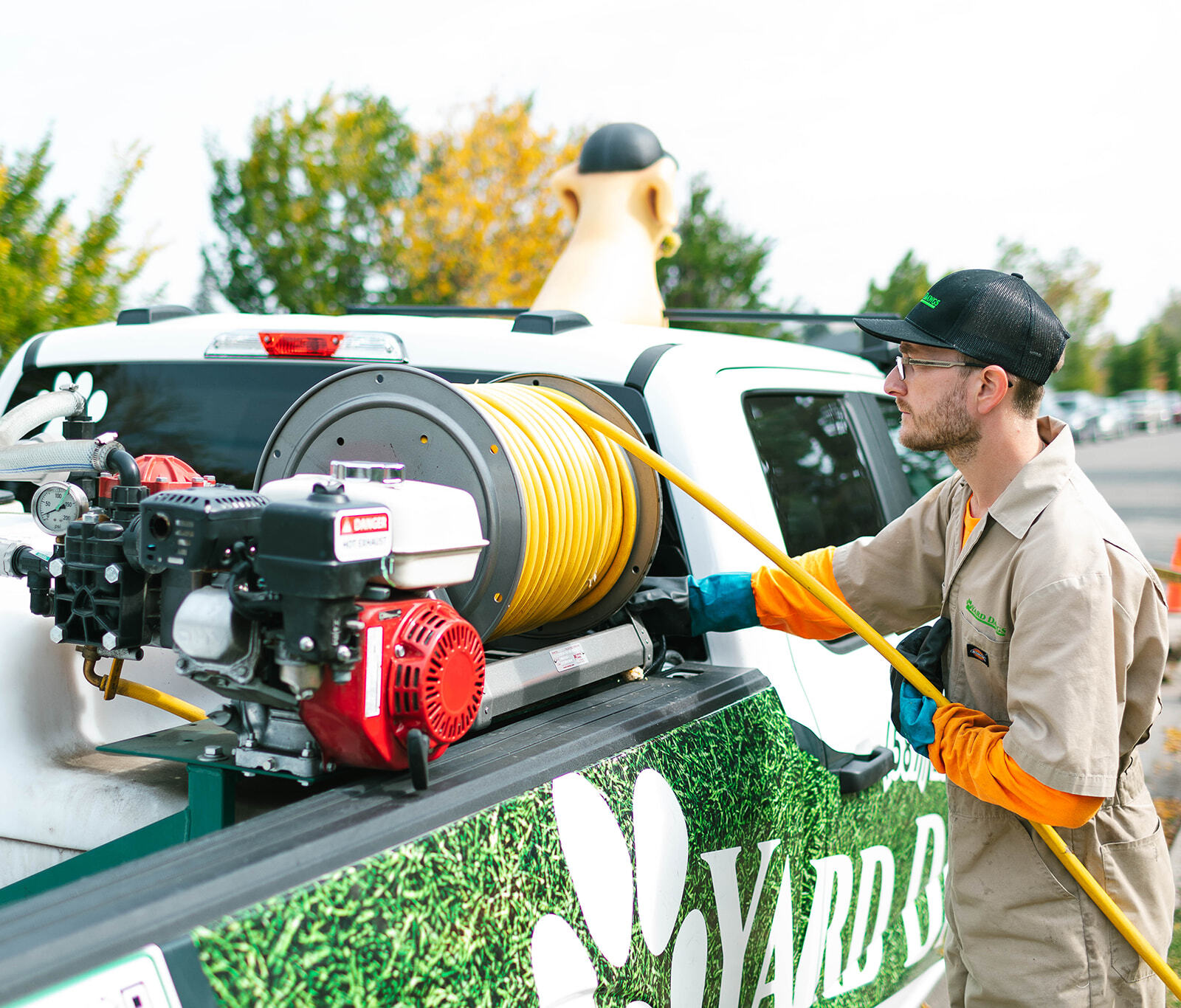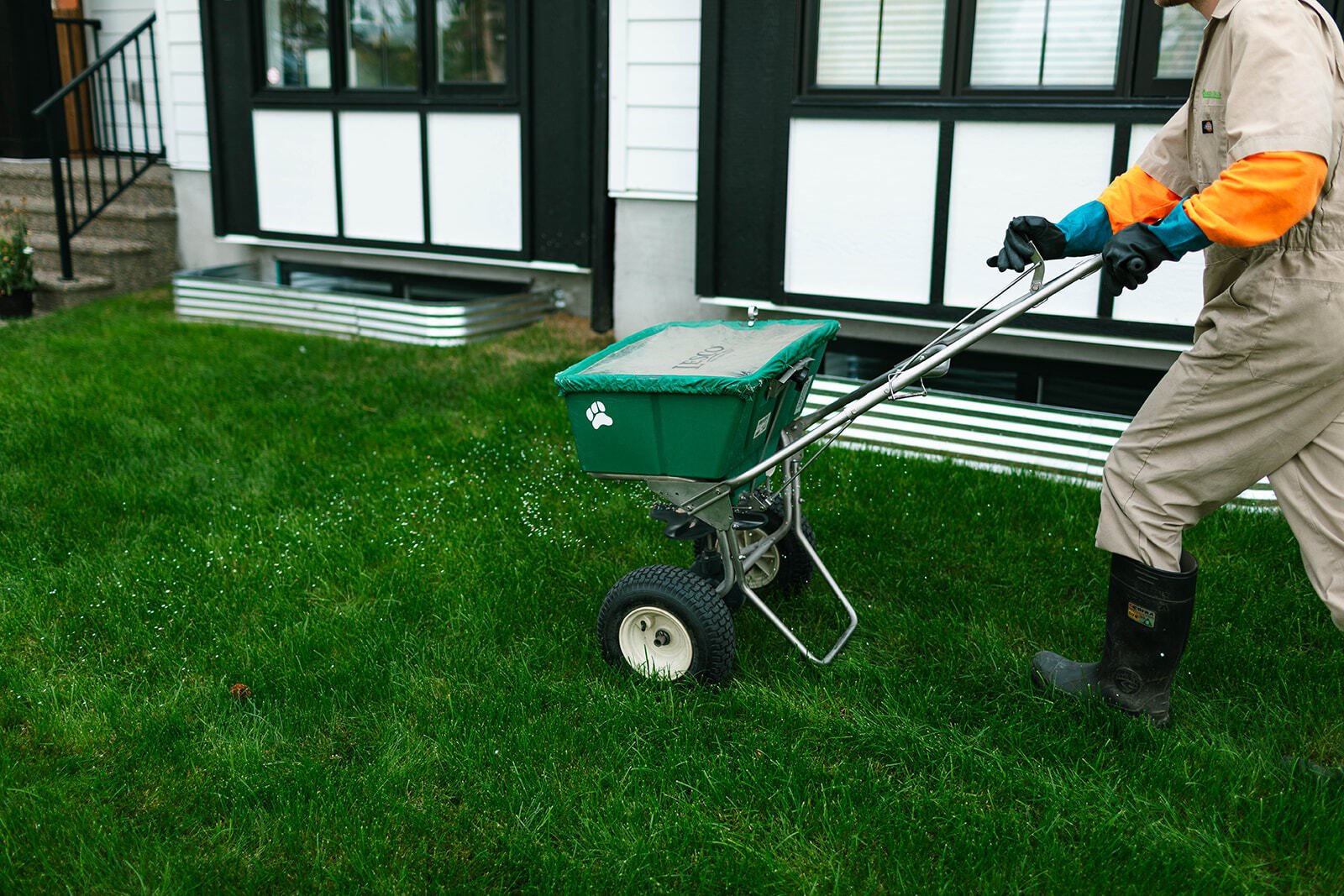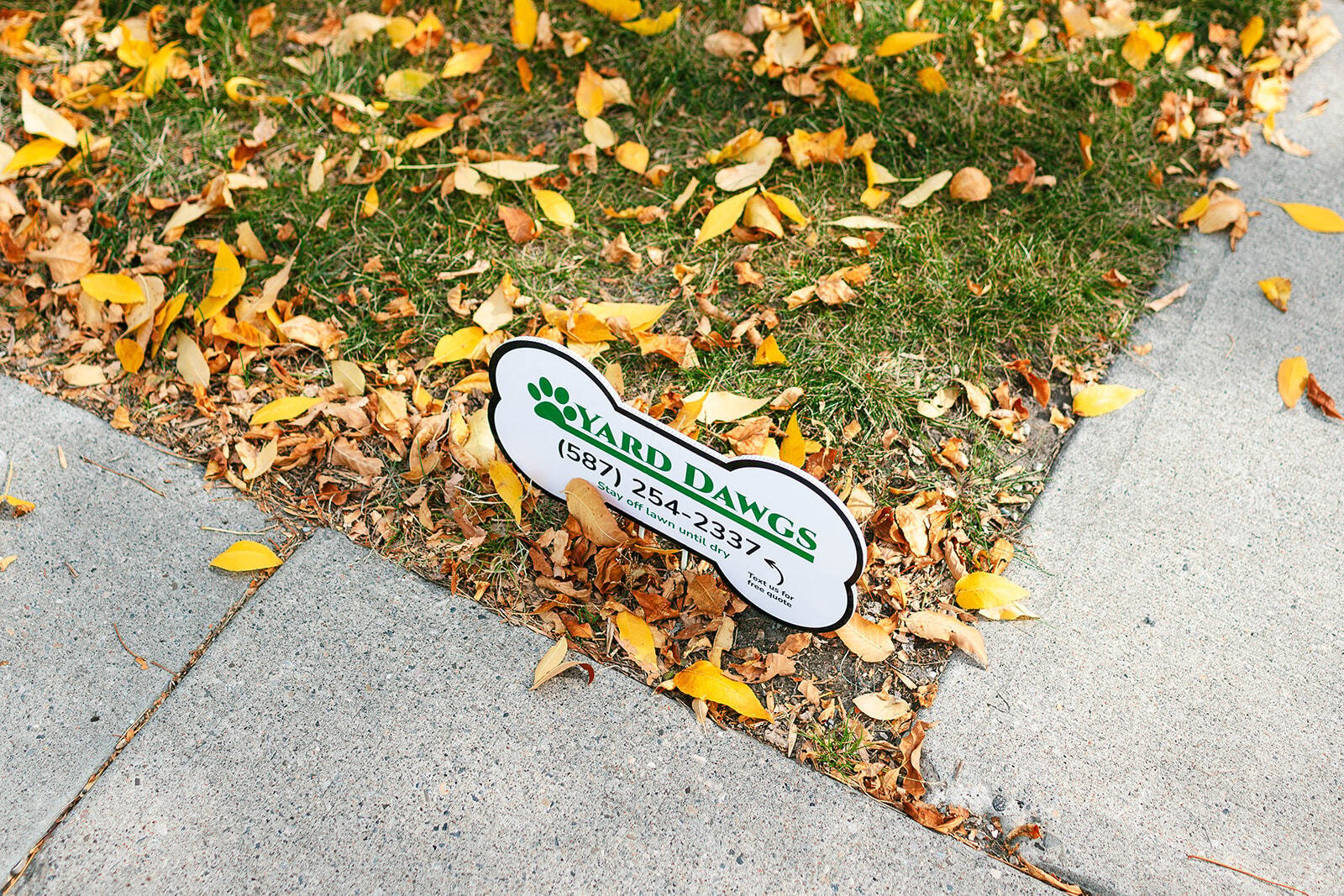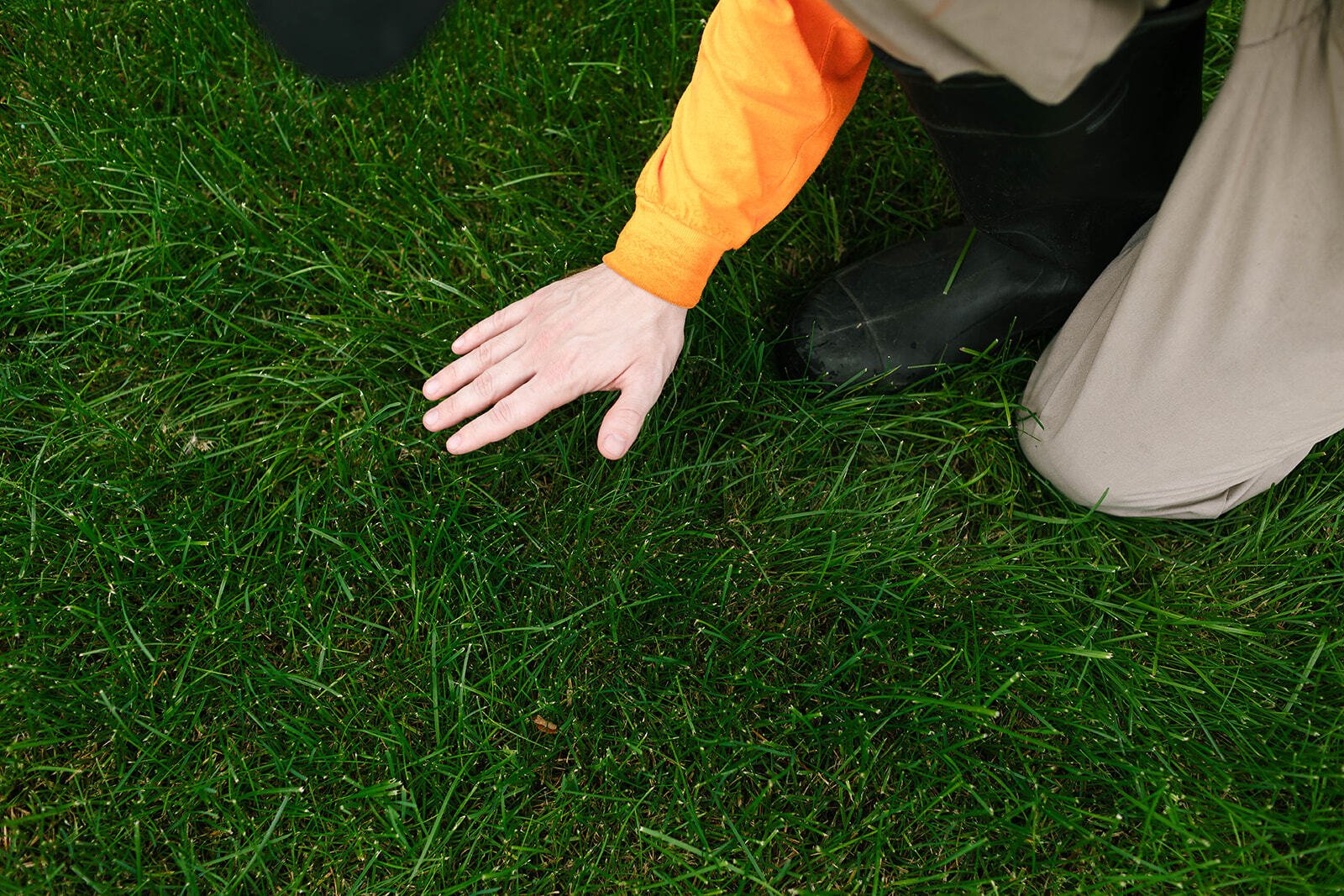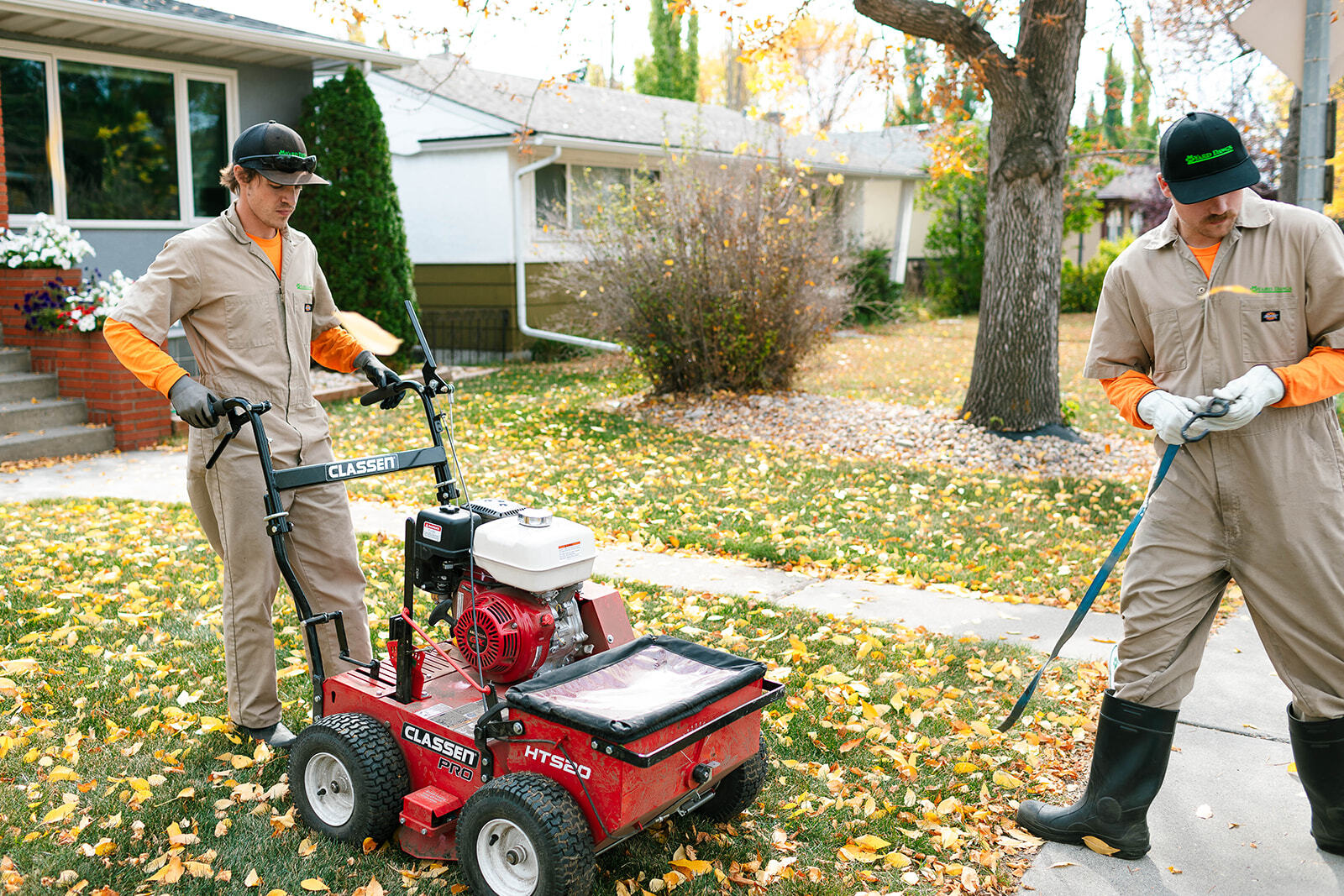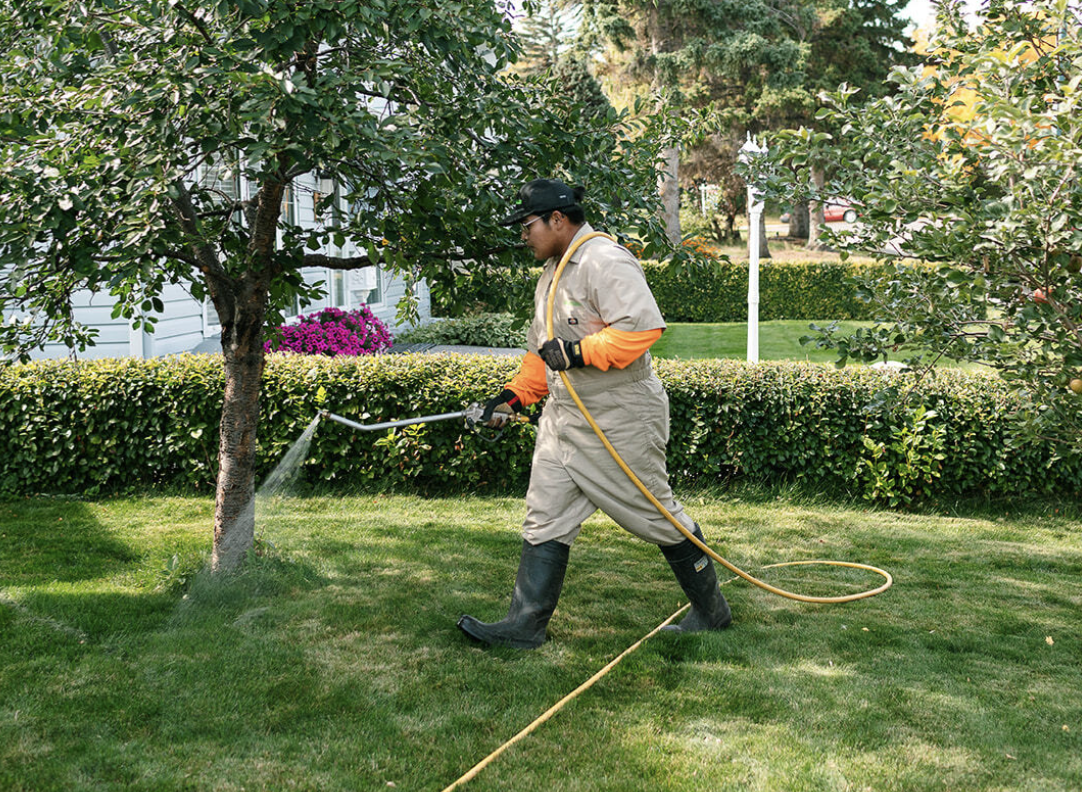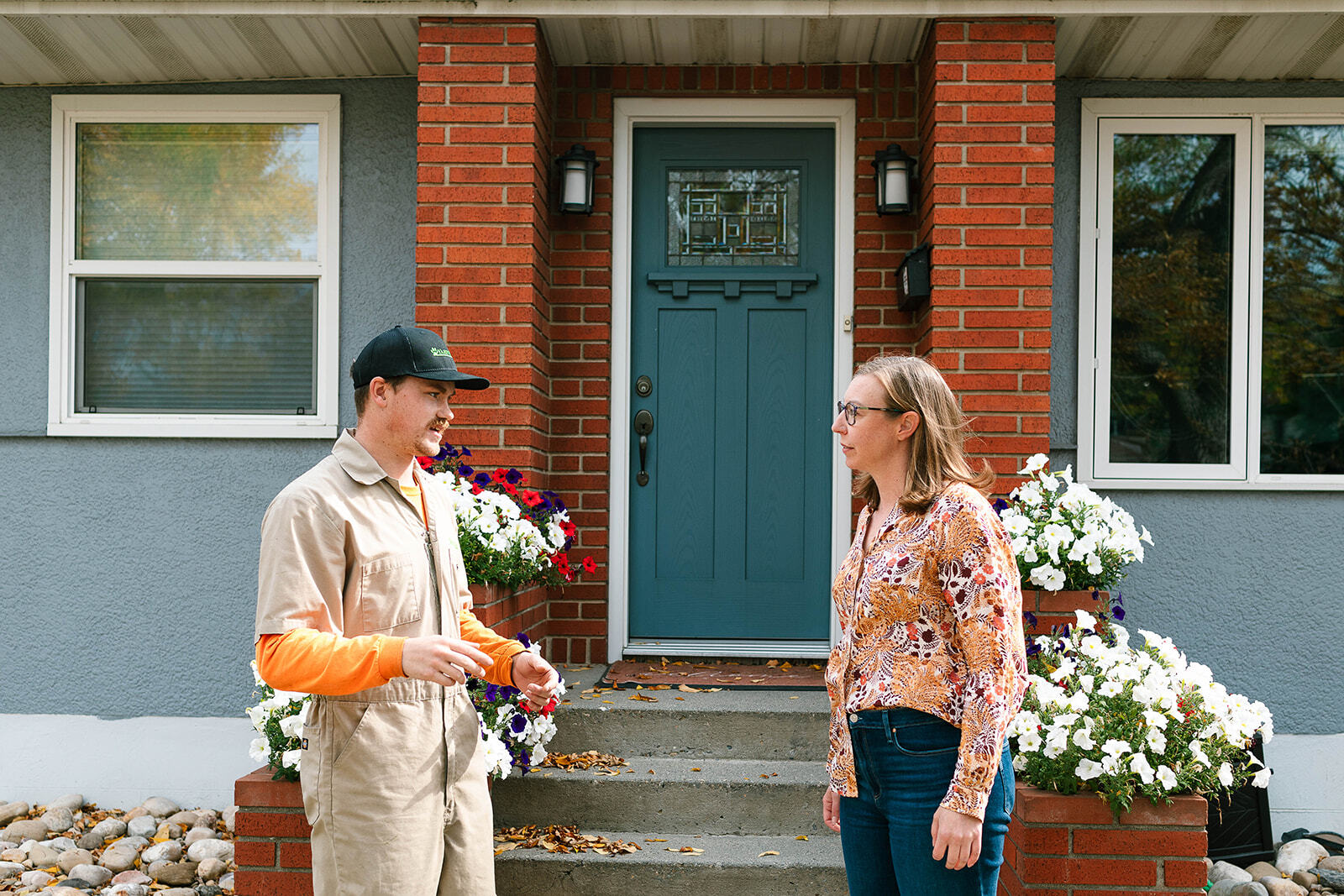Overseeding is one of the most effective ways to revive a tired lawn, but success starts with the right soil.
Choosing the best soil can make or break your overseeding results in Calgary's unique climate. From soil composition to moisture retention, this article breaks down what to look for and how to set your lawn up for a lush, healthy comeback.

What is Overseeding?
Overseeding is the process of planting grass seed directly onto an existing lawn without tearing up the turf. This technique helps fill in bare spots, improve the lawn’s overall density, and enhance its color and texture. It's especially beneficial for lawns that have become thin due to weather stress, foot traffic, or pest damage. Overseeding is typically done in the fall or early spring when the conditions are ideal for grass growth, ensuring that the new seeds can germinate and establish strong roots.
Benefits of Overseeding Your Lawn in Calgary
Overseeding offers a range of advantages, especially in Calgary's variable climate. It not only improves the aesthetic appeal of your lawn but also ensures it’s healthier and more resilient. Below are five key benefits of overseeding in Calgary:
Enhances Lawn Density
Overseeding helps fill in bare patches and thickens your lawn, creating a lush, green carpet. As the new grass grows, it blends with the existing turf, boosting its overall density and improving the lawn’s appearance.
Improves Grass Resilience
Calgary’s weather can be tough on lawns, with extreme temperatures and unpredictable conditions. Overseeding strengthens the turf, making it more resistant to drought, heat, and cold, helping it survive and thrive through changing seasons.
Prevents Weeds from Taking Over
A denser lawn provides less space for weeds to establish themselves. Overseeding with a healthy grass variety helps crowd out weeds, reducing their growth and preventing future weed infestations from taking root.
Boosts Lawn Health
Overseeding can rejuvenate older or stressed grass, introducing newer, more robust varieties that thrive in Calgary’s soil and weather conditions. This boosts the overall health of your lawn, making it more vibrant and better equipped to handle pests and diseases.
Improves Soil Health
As grass grows through overseeding, its roots penetrate deeper into the soil, improving soil structure and promoting better nutrient absorption. This helps improve the overall health of the soil, benefiting your lawn in the long term.
How to Choose the Best Soil for Overseeding Your Lawn
Selecting the right soil is critical for successful overseeding. The soil quality will directly affect seed germination, root development, and the overall health of your lawn. Here's a step-by-step guide to help you choose and prepare the best soil for overseeding your Calgary lawn:
Test Your Soil pH
Soil pH is crucial for grass seeds to thrive. Testing your soil will give you a better understanding of its acidity or alkalinity, which can affect seed germination and nutrient uptake.
- Use a soil pH testing kit available at garden centers.
- Aim for a pH level between 6.0 and 7.0 for most grass varieties.
- If your soil is too acidic, add lime; if it's too alkaline, add sulphur to adjust the pH.
Ensure Good Soil Aeration
Aerating the soil improves airflow and water infiltration, creating an environment where grassroots can grow deep and strong. Aeration is particularly important in Calgary’s compacted soil.
- Rent or purchase a core aerator, which removes small plugs of soil.
- Aerate the lawn during fall or early spring when the soil is moist but not saturated.
- Focus on areas with heavy foot traffic or compacted soil, such as around pathways or patios.
Amend Soil with Organic Matter
Adding organic matter, such as compost or topsoil, will improve soil texture, moisture retention, and nutrient content, creating the ideal conditions for new grass growth.
- Spread a thin layer of compost or topsoil (about ¼ inch) over the lawn.
- Mix it lightly into the existing soil using a rake or lawn dethatcher.
- Organic amendments also help retain moisture and provide nutrients as the grass grows.
Choose the Right Soil Texture
Soil texture plays a role in how well your grass seeds will germinate. A balanced soil with good drainage and enough moisture retention is ideal for overseeding.
- Sandy soils drain quickly but don’t retain enough moisture, while clay soils retain water but can be too compact for roots to penetrate.
- Aim for loamy soil, which has the perfect balance of sand, silt, and clay.
- If your soil is too sandy or clay-heavy, consider mixing in organic materials to improve its texture.
Add Fertilizer for Strong Growth
Fertilizing before or after overseeding ensures that your new grass has the nutrients it needs to establish itself. Choose a balanced fertilizer with the right ratio of nitrogen, phosphorus, and potassium.
- Apply a slow-release fertilizer before overseeding to give the seeds a steady supply of nutrients.
- Avoid high-nitrogen fertilizers, as they can promote excessive leaf growth but not root development.
- Follow up with another light fertilizer application in early spring to encourage healthy growth.
Water Properly After Overseeding
Proper watering is essential for seed germination. After planting the seeds, you must keep the soil consistently moist without overwatering.
- Water lightly every day until the seeds have germinated, ensuring the soil stays moist but not waterlogged.
- Gradually reduce watering frequency once the grass starts to grow and establish.
- Water deeply but less frequently once the grass is established, encouraging deep root growth.
Let Yard Dawgs Take Care of the Overseeding for You
Choosing the right soil is just the beginning. Proper overseeding takes time, care, and expertise. At Yard Dawgs, we handle the entire process for you, from soil prep to seed selection and beyond. Let us help your Calgary lawn grow greener, thicker, and healthier.


